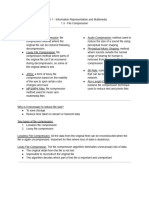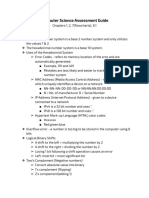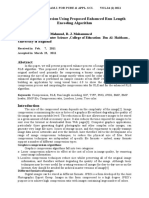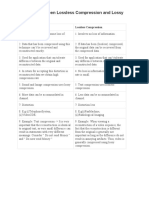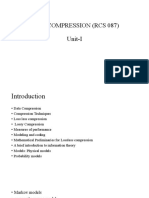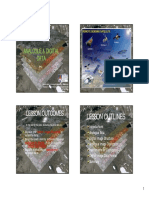0% found this document useful (0 votes)
15 views5 pages1.2, 1.3 Text and Image Storage & Compression
The document discusses various methods of text, sound, and image storage and compression, including ASCII, Unicode, and different sound and image representation techniques. It explains the differences between lossless and lossy compression, providing examples such as MP3, MP4, JPEG, and Run Length Encoding (RLE). Key concepts include character encoding, sound sampling, image resolution, and file size calculations.
Uploaded by
ajajCopyright
© © All Rights Reserved
We take content rights seriously. If you suspect this is your content, claim it here.
Available Formats
Download as DOCX, PDF, TXT or read online on Scribd
0% found this document useful (0 votes)
15 views5 pages1.2, 1.3 Text and Image Storage & Compression
The document discusses various methods of text, sound, and image storage and compression, including ASCII, Unicode, and different sound and image representation techniques. It explains the differences between lossless and lossy compression, providing examples such as MP3, MP4, JPEG, and Run Length Encoding (RLE). Key concepts include character encoding, sound sampling, image resolution, and file size calculations.
Uploaded by
ajajCopyright
© © All Rights Reserved
We take content rights seriously. If you suspect this is your content, claim it here.
Available Formats
Download as DOCX, PDF, TXT or read online on Scribd
/ 5







































